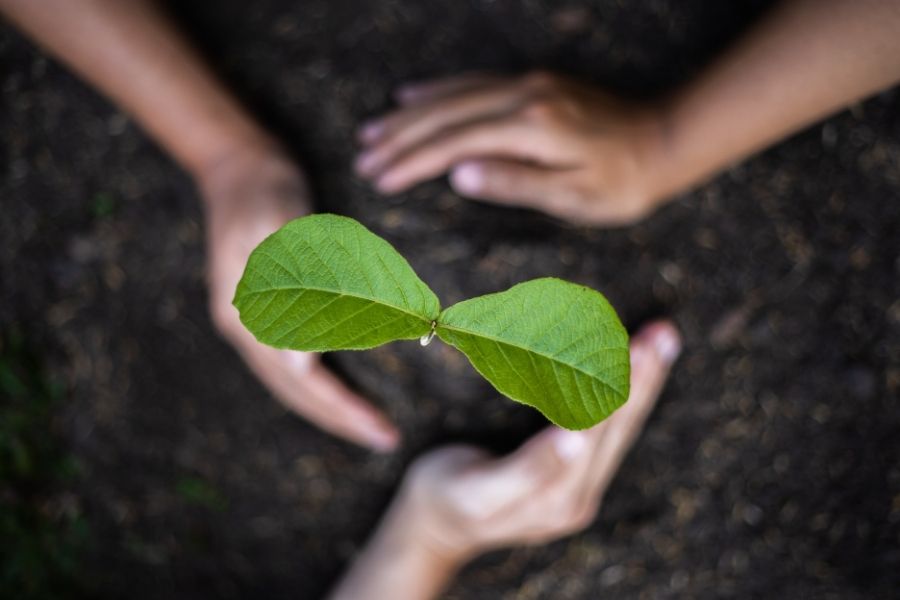How To Plant A Tree
Trees are the lungs of our planet, providing us with oxygen and pulling pollution out of the air. They help regulate climate, absorb heat-trapping gases, such as CO2, and produce cooling shade that helps fight urban heat islands.
Since trees provide us with unlimited benefits, we need to plant more of them. We know that not everyone has a green thumb, so, if you’re wondering how to plant a tree in your backyard, here is a step-by-step guide to get you started.
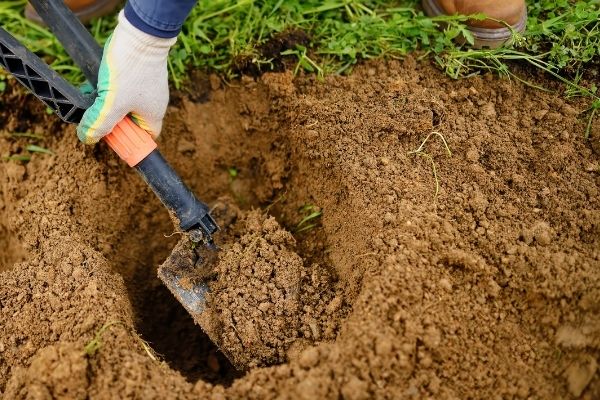
Step 1: Digging the Hole
First, dig a hole that’s the same depth but two to three times as wide as your tree container. Using a shovel, such as the John Deere 61 digging shovel from Ace Hardware, measure the approximate depth of the planting hole. And while you’re at it, loosen up the soil with the shovel at the edges of the planting hole. Be sure to save the soil from your hole.
Step 2: Preparing the Root Ball
Before planting the tree, you need to remove the root ball from the container and soak it in water. The root ball, which is the compact mass of roots and soil, needs to be loosened up prior to putting it in the soil for better growth. Alternatively, you could lay the tree down and manually loosen up the soil with your fingers.
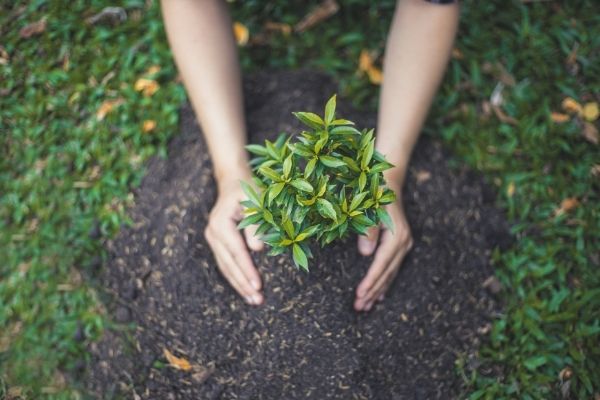
Step 3: Planting the Tree
Trees only get one chance to be planted correctly. Thus, you have to be certain about getting it right the first time. Put the root ball in the planting hole, ensuring that the junction between the roots and the trunk is at soil level. Since most of the roots spread and grow in the upper twelve inches of soil, placing the tree at an improper height will hinder the tree’s growth.
Step 4: Filling Up the Hole
Now that your tree is in place, it’s time to secure it in this position with soil. Mix around 20% of compost with the soil from the plant hole to get optimum growth results. Break any clumps of soil to loosen it up before you start using it to fill the hole again. Hold the tree upright as you fill the area up halfway, and then gently tamp the soil with your shovel or the toe of your shoe.
Step 5: Removing Air Pockets
Air pockets can be detrimental to your tree’s growth. Hence, once you’ve filled the planting hole midway, you need to take care of a few things to stop air pockets from forming. Besides lightly pressing the soil, you can add a spray of water not only to hydrate your tree’s roots but also to stop the creation of air pockets. Finish filling up the rest of the planting hole with the remaining soil, gently tamping the ground at the end.
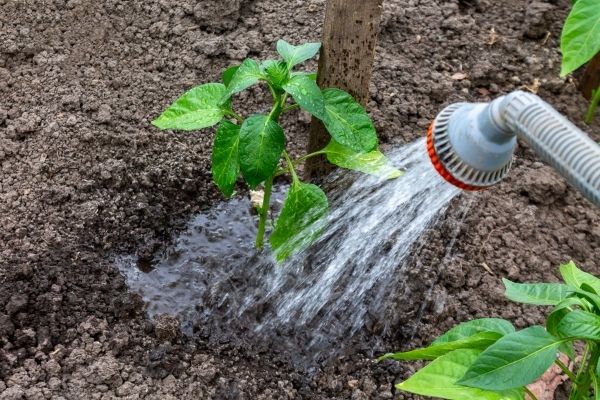
Step 6: Watering
The last step to planting your tree is to create a basin around the root ball. As your tree’s roots are still only contained in the root ball, you need to water it directly. Surround the root ball with up to 3 inches of water to provide the roots with ample moisture. Unless you are in the rainy season in your area, you will need to generously water your new tree every day or two until the roots of the tree are well established. This can take up to 12 weeks, but ensuring that your tree gets enough water during this time is critical for the future growth of your tree.
For extra safety and protection, also consider adding a tree trunk protector like this one from Lowes, so no predators or wildlife can harm the delicate plant.
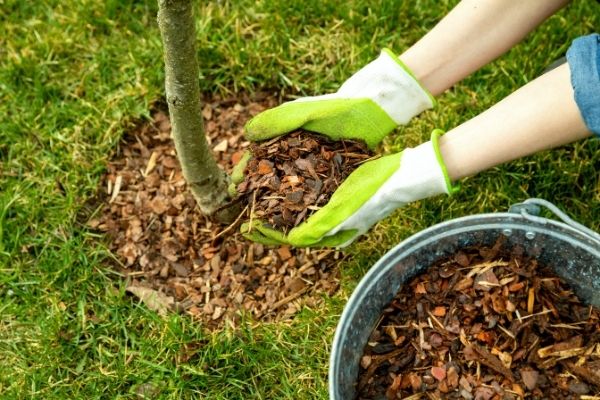
Step 7: Mulching
Mulching around new trees is a practice that many homeowners use to improve the health and wellness of their plants. You can add organic matter such as tree trimmings, leaves, grass clippings, or wood chips or pine straw. Mulching your tree will improve soil quality, provide insulation from extreme temperatures, and maintain moisture.
People Also Ask
What is the best time to plant a tree?
The secret to successfully planting a tree is in the digging. However, there are certain times during the year when planting your trees will give you better results. Generally, the fall and spring seasons are considered the perfect time for planting and growing trees. If you live in a place with particularly harsh winters, be sure to get your tree in the ground early in the autumn, or even in the late summer. If you are in a climate with particularly hot and dry summers, be sure to get your tree in the ground very early in the spring, or even late in the winter (as soon as the chance for frost has passed). Also, be sure that you continue to water your plant well into the hot, dry season if you’ve planted in the spring in one of these areas.
How can I make my tree grow faster?
Trees need more than just oxygen and water to thrive; they need nutrients. While you must have heard it many times before, adding a quality fertilizer to your plant’s soil will make it grow faster and stronger. Fertilizers carry essential nutrients that, once taken up by roots, speed up the development of new, healthy foliage.
Are there any restrictions on digging planting holes?
In the United States, communities usually have zoning laws restricting where you can and can’t dig planting holes. These laws are put in place so that people don’t dig into the underground telephone or other utility lines.
If you plan to plant a tree on your property, don’t forget to give 811 a call. This is the national call-before-you-dig hotline. Calling this number will help get all the underground utilities marked in your area free of charge, so you can avoid causing damage or getting fined for breaking the law. While this might not be necessary for smaller shrubs and bushes, it is definitely a must for larger trees with larger root balls.

